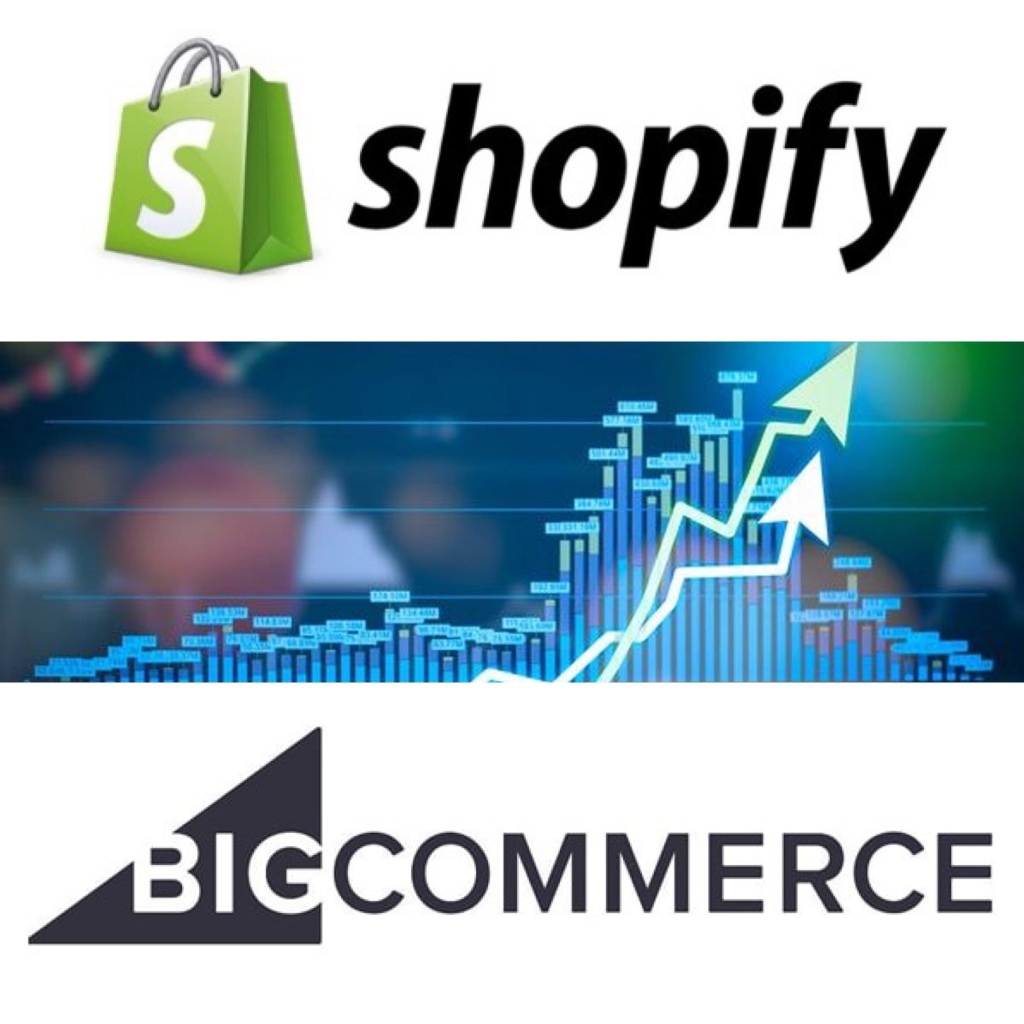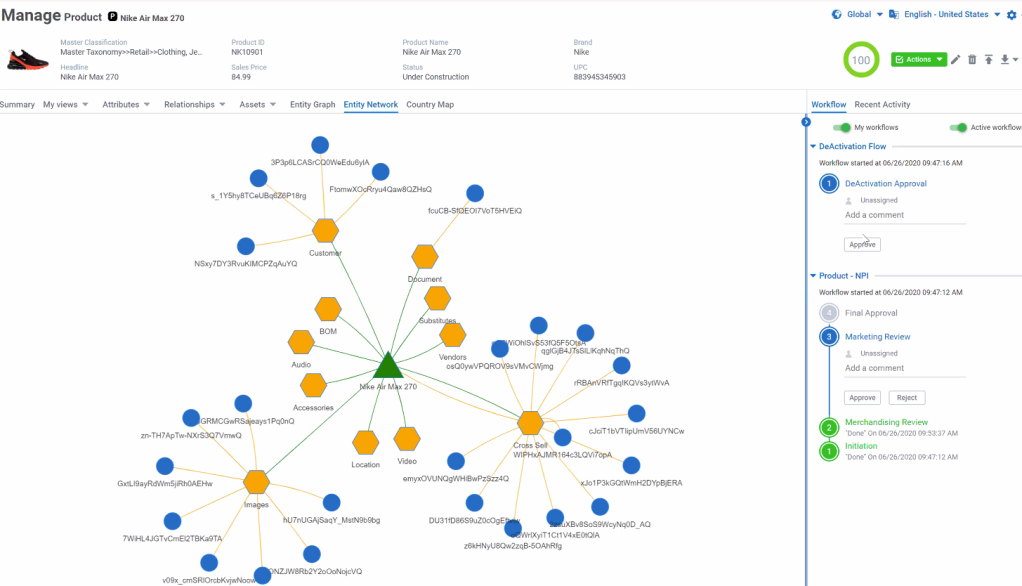If you have not invested in the early days of Shopify and Big Commerce I am sure you regret it. And you may ask: Will their growth Continue? Will it reach heights like Amazon? But there is one thing even the smartest people do not see…

COVID-19 has finally opened the eyes of everyone that e-commerce matters and it has changed the world economy with a drastic impact in 2020.
Shift happened: Trends like working form home, switch from retail to e-commerce, from gym to work out at home, home schooling and more have emphasized the need for digitalization.
Why are the stocks of Shopify & Big Commerce a success story?
Shopify [SHOP] allows small business owners to sell their products online on a user-friendly platform and skip the middlemen, such as Amazon and Etsy.
The company’s revenue grew by 47% at the same time last year. This is even greater than the overall growth rate of ecommerce in general, which is estimated to hover just below 15%.
Embracing on the concept of the platform economy is another factor that made Shopify sky rocket.
„The platform economy is economic and social activity facilitated by platforms. Such platforms are typically online matchmakers or technology frameworks. By far the most common type are “transaction platforms“, also known as “digital matchmakers”. Examples of transaction platforms include Amazon, Airbnb, Uber, and Baidu. A second type is the “innovation platform“, which provides a common technology framework upon which others can build, such as the many independent developers who work on Microsoft‘s platform.“ (Source: Wikipedia)
For me Shopify combines both.
BigCommerce is a competitor to Shopify, which has seen tremendous growth during the pandemic as businesses pivoted online. Shopify reported a near-doubling of revenue in its second quarter, while gross merchandise value surged by almost 120%.
BigCommerce has yet to report quarterly results following its initial public offering in August, but the company was growing at a less impressive pace earlier this year. BigCommerce reported revenue growth of about 47% in the first quarter, although growth may have accelerated since then. The Instagram integration & check out, will further help the cause.
Both make commerce possible in a no-code or low-code approach. Even I am able to create my own Shopify online shop in only a few days, just by using my mobile phone.
MarTech Program Chair Scott Brinker recently posted „Applying Christensen’s disruptive innovation model to “no code” tools shows that today most use cases are for creating things that are unserved by specialists and expert solutions because they’re too low-end to justify applying high-powered talent (and associated costs) to it.“

If we follow this chart, Shopify and Big Commerce must be a mid-range use case.
But there is one thing what enterprise companies who subscribe to e-commerce solutions and private investors in e-commerce stocks do not see. It is the one thing without this, e-commerce sales is impossible.
Selling fashion or electronics or any product or service online, is not as simple as people think. Without correct, complete and current DATA, e-commerce sales is not possible. The following examples are just two of many, which show to non-data people, that this market is maybe bigger then e-commerce and it decides how good digital commerce will be.
Shop the look
Online pure play Zalando for example launched a „shop the look“ offerings in 2015 the first time. But if you sell over 2 Million products from over 1000 suppliers, the challenge gets complex. You have to consolidate different colors schemes, size charts, fabrics; styles and many more to one common standard to enable these bundles. And this at fast pace.

This job eats resources and has deep impact on e-commerce KPIs as conversion rate, cart value or returns. (This Blog lists examples of research that prove how these KPI are impacted by data)

And now think of an industry with even more complex dependencies like automotive after market, building materials, construction or others.

Understand your customer
Every CEO claims in his annual report that customer centricity is key to their company. But from the idea to execution, there is often a big gap.
A Customer 360 view has four levels of customer information. The profile (contact info, location, preferences) the interactions (channels, Products, social, sales offers, marketing), the transactions (Billings; payments, IoT, devices) and the relationships (services, products, social relationships, household, business relationships)
In large enterprises I have seen up to 150 different systems or tools where customer data are stored. How does this enable a 360 view of your needs? Examples are ERP, CRM, E-Mail, HR Systems, e-commerce, social media, Store-system, Excel, e-Mail tools, marketing automation. Scott Brinkers MarTech landscape lists 5000-7000 marketing apps alone.

Conclusion:
Data management solutions, who follow the advantages of the platform economy on a no-code or low-code level, are the next big bet for investors and business leaders.
These solutions allow e-commerce businesses to reach new heights by enabling scale & speed with optimized operational efficiency. They connect products, customers, employees, suppliers, locations and more. Of course machine learning is part of such offerings.

These are the key factors for finding the right (master) data experience platform. All criteria are applicable for companies using it or people who are investing in it.
1. Cloud native SaaS business model (simple for customers as it includes any updates seamless and as low and transparent TCO – and a recurring revenue for growth if you are a shareholder)
2. The Technology core should be made for scale. Future ready platforms are build on big data tech, use new non-relational databases, use micro-services and are API driven.
3. App-Platform: The biggest advantage of the platform economy is, to be able to react to change. Being able to plan for the unknown future. On low-code or even no-code, you can extend like MDM platform like Apple or Shopify, by building smart add-ons. For examples full apps for a certain industry need or specific reporting dashboards or User Interface adoptions.
4. Connectivity & integration framework: business critical data about customers, products or more live in even more places and applications. The pace of change and the volumes have no boundaries. That makes it key to connect form and to any source, in any format and transform data in order to make them usable for smarter business decisions. Platform must have a strong an s flexible connector framework.
5. Machine Learning driven: A few years back every claimed now to offer some level of AI. Then the world understood it is machine learning which helps to make classification and match / merge of master data records like customer and product data more faster for quicker time to market. Further more it helps to reduce errors in data quality. For example to ensure complying with regulations like in food or Pharma or just having a shipping address correct.

2 thoughts on “The Success of Shopify and Big Commerce (Stocks) would not be possible without this …”